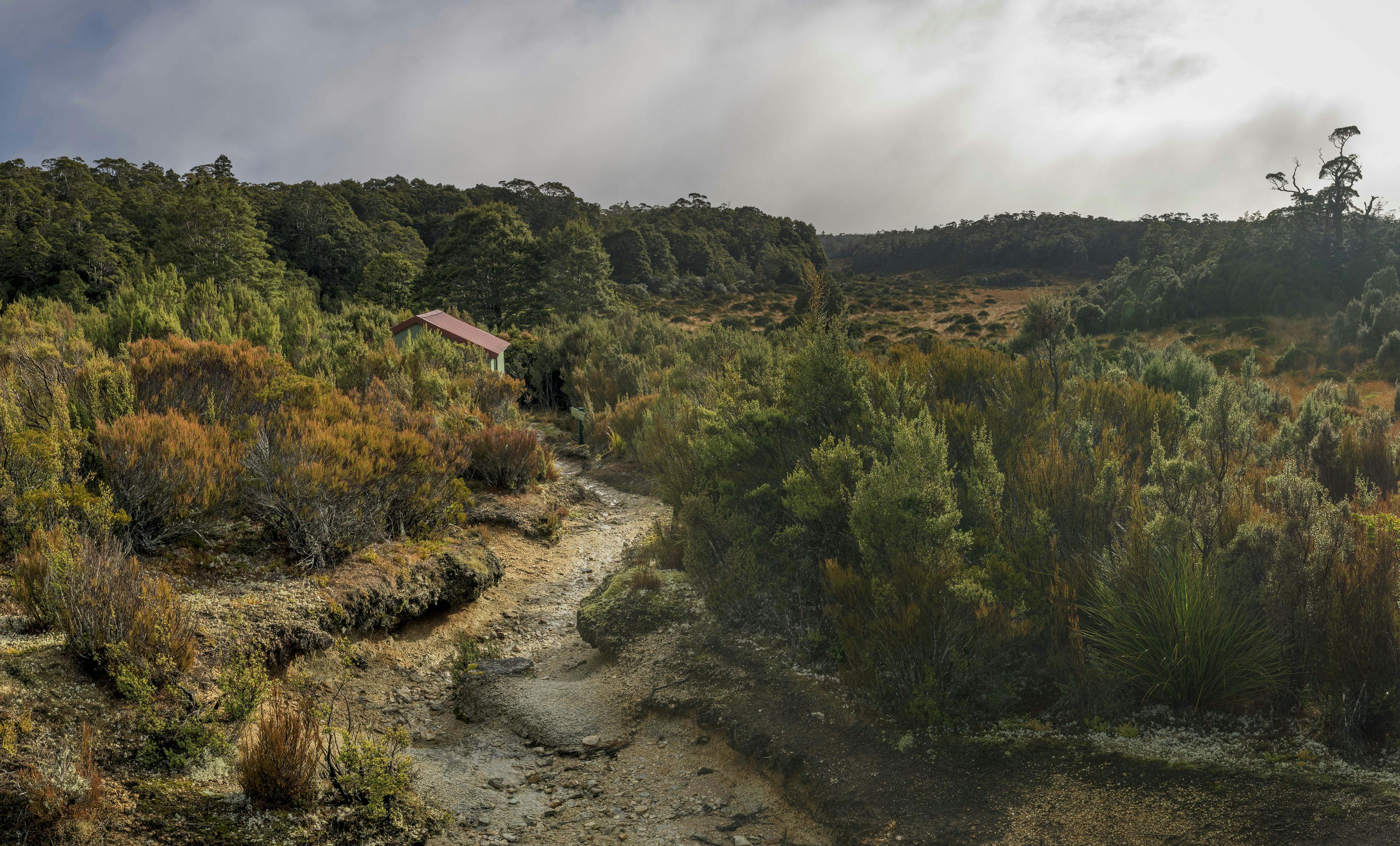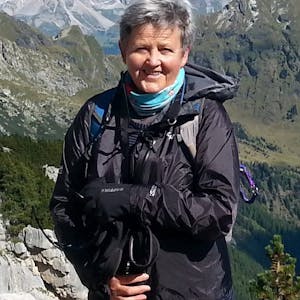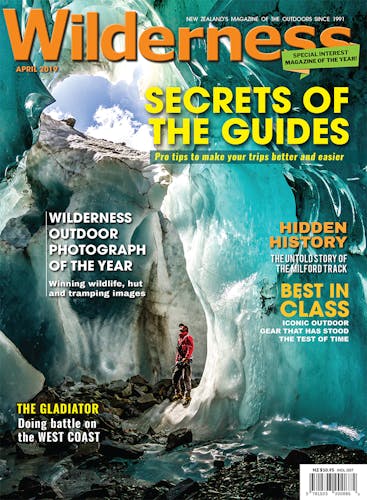While thousands walked, kayaked and camped around the Abel Tasman coast this summer, Kathy Ombler found solitude and serenading bellbirds on the park’s Inland Track
Take a tent, they said. Abel Tasman is so busy at this time of year.
Not on the Inland Track. Two nights, three days, and not a (human) soul was to be seen. In mid-January. Just the ubiquitous weka welcomes at the huts, and the cacophony of bellbirds that serenaded me along hot, dry Evans Ridge on the ‘roof’ of the park, perhaps recognising that encouragement was needed to manoeuvre this solitary, sweating human to safe refuge.
Because I did take a tent, along with copious foodie treats for this ‘holiday’ in the park, and my pack was too heavy for my fitness at the time, especially in the unforgiving heat.
It was a beautiful walk though.
Initially, I’d planned it for winter; when snow and ice thwart access to other, higher places. Such are my planning skills, however, here I was in mid-summer, lumbering off from Marahau on the coast track to Tinline Bay, along with day trippers and ‘Great Walkers’, of all nationalities, ages and sizes. The mother with a very grumpy four-year-old in tow, heading to Anchorage, told him he should be happy because he wasn’t carrying a big pack like mine. Sorry grumpy boy.
Then I turned uphill, heading to Castle Rocks Hut, and it was just me. The track was steadily benched and climbed through regenerating forest, both relics from early farming attempts here. Views unfolded, of Marahau, Motuareronui/Adele Island, kayaks and water taxis buzzing frenetically in all directions and that water looking so good, so far away.
Two hours before the hut, I puffed into Holyoake Clearing, and resisted the temptation to stop overnight in the cute little two bunk shelter overlooking Nelson Bay. Pushing on, it was a happy discovery that most of the climbing was now done. Also, the bush changed, from regenerating manuka to mature beech, mixed with big (and shady) rimu and miro.
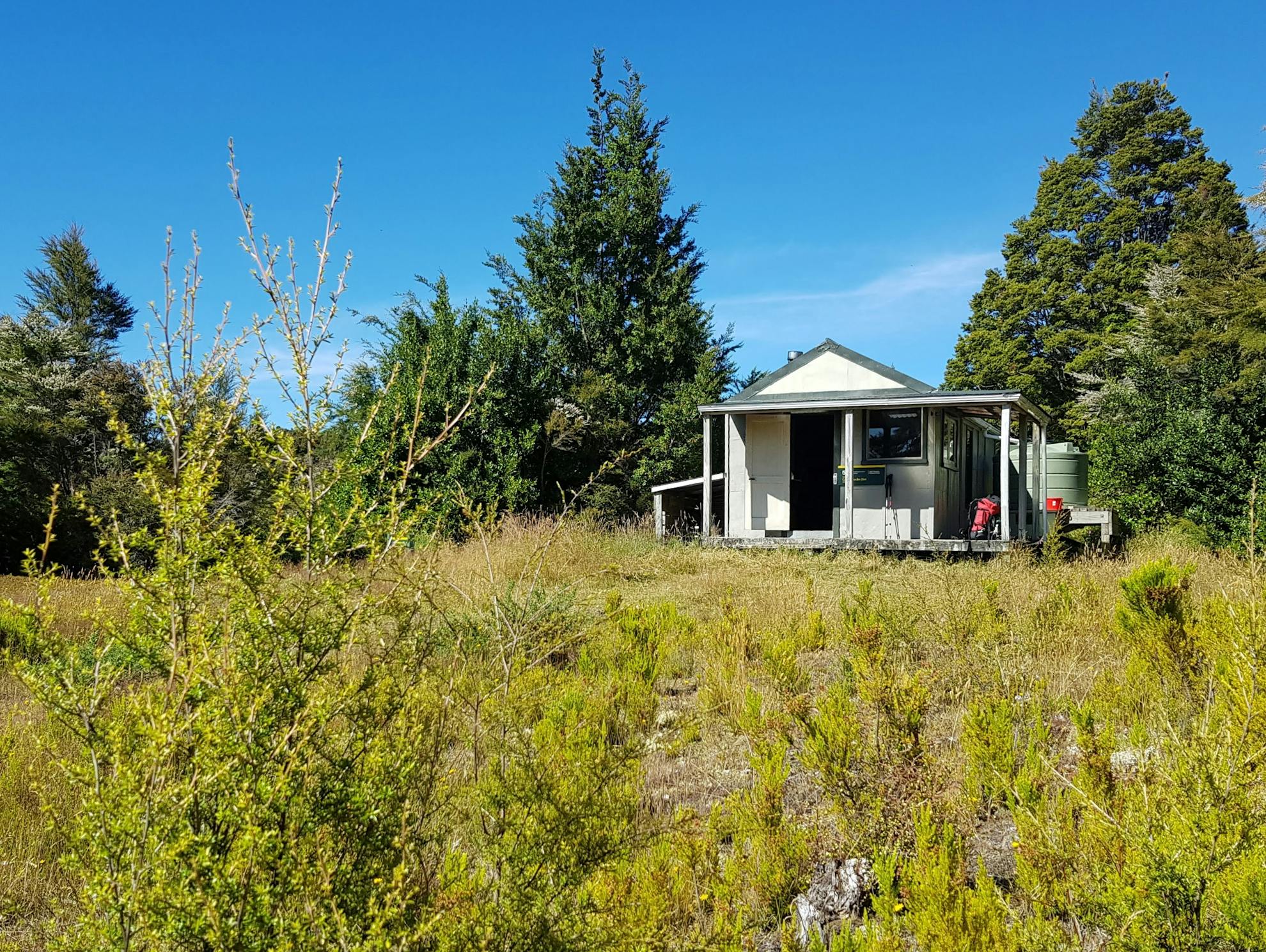
Lining the track were stoat traps. One every 100m; thanks to Project Janszoon the stoat trapping network now covers 90 per cent of the entire park. Good to know fewer baby birds will be mauled in their nests by this marauding predator.
Castle Rocks Hut, nestled in a little clearing, was a welcome sight. I won’t say how long it took me to get there from Marahau, just know that the track signs indicate 5-6 hours and this should do it. Two weka looked as excited to see me as I was to see the hut. They even mustered two cute, fluffy black chicks from under its floorboards to join the welcome party. And no-one else arrived, though the hut book recorded that occasional visitors from around the world have discovered the charming spot. Built as a Forest Service six bunker, the hut has been refurbished this century and now has eight bunks, big windows and a covered veranda.
The Castle Rocks themselves, several granite outcrops, are hidden in scrubby bush 350m and a steep gully away from the hut. Getting onto them involved some scrambling through gorse, but the views, again looking across Nelson Bay to the Richmond Ranges, were worth the scratches.
Day two, to Awapoto Hut, started with another hearty climb. With fresh legs, it was an OK two-hour scramble to Moa Park, a red tussock clearing crammed with more than 200 alpine and subalpine plant species that flourish in the unique soils found here.
It’s the only such clearing in the park, also home to the only reliable water source for the four-hour walk to Awapoto Hut. I drank my fill then headed on, past a turn-off to Canaan Road, and followed the long, gently undulating Evans Ridge.
Being familiar with Abel Tasman’s coastal regeneration, the forest up here, both its maturity and variety, was a happy revelation. Mountain cabbages and New Zealand cedars merged with silver beech, northern rata, rimu, matai and more. Most striking was the dracophyllum, mountain neinei, shedding its long golden leaves to literally carpet the track. The birds, too, were out in force. Joining the afore-mentioned chorusing bellbirds were robins, tomtits, tūī, rifleman, kākāriki and weka. (Thus it was curious to read one recent punter’s comment in the Awapoto hut book: ‘There is no birdlife here since DOC spread 1080’. I guess there’s no convincing some people.)
Awapoto Hut was a gem, perched atop an open knoll, albeit with much bracken and long grass to push through, the clearing reportedly the result of a massive storm many years ago. The 12 bunk hut is a Fraemohs kitset design, with big windows offering views in every direction. Looking north was Golden Bay’s Wainui Inlet, north-east and south the forested roof of the park, east and west the sun rising and setting.
Again, weka were my only company. Since their re-introduction to Totaranui in 2006, weka have spread throughout the park. They cause angst with their scavenging and stealing, however, one of my nosy companions proved a right entertainer after sneaking into the hut, then losing traction on the slippery floor. With frantic scrambling and rolling of feathers and feet in all directions, he somehow made it to the door and squawked indignantly into the refuge of the long grass outside.
Then I kept the door shut.
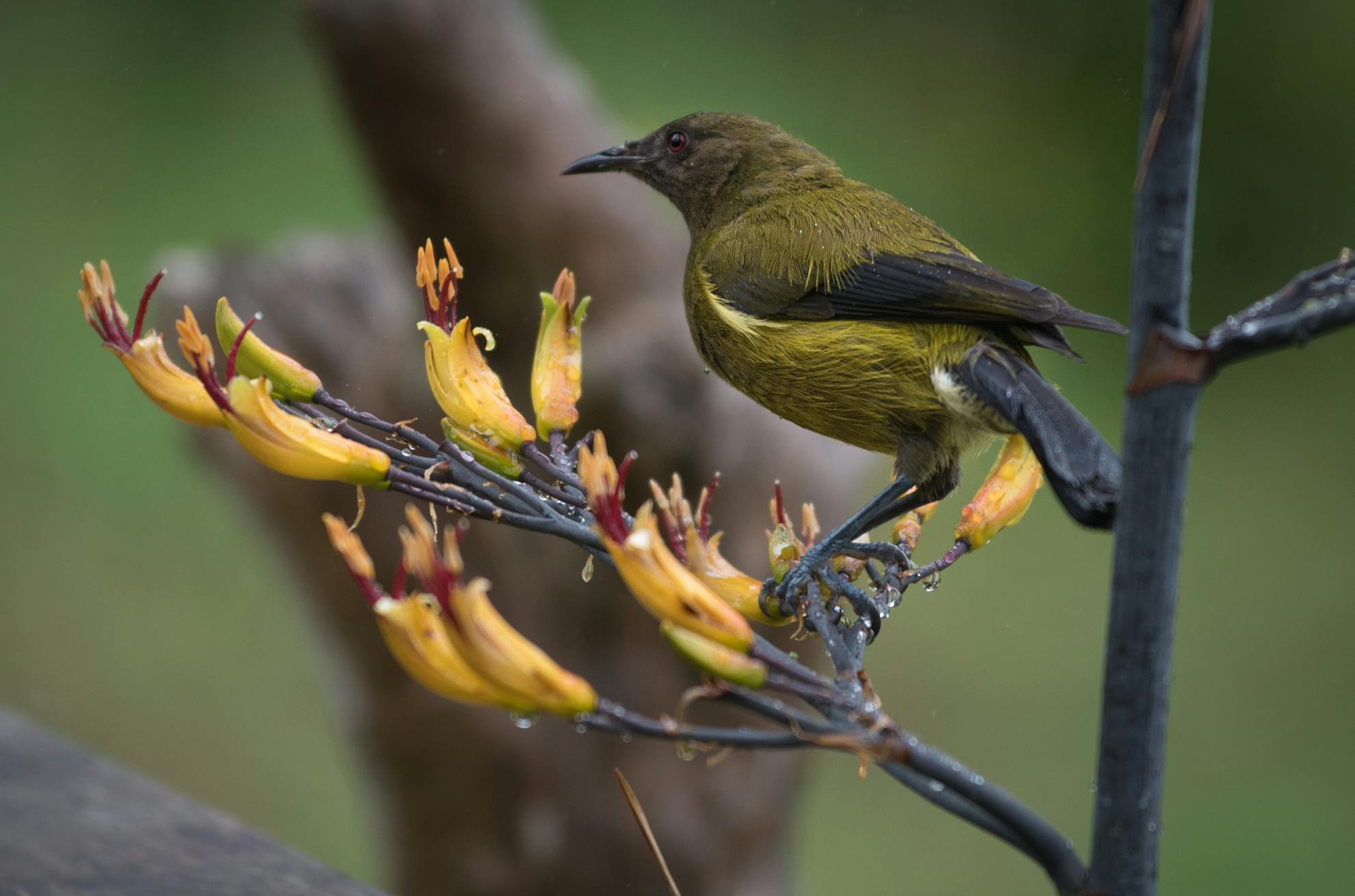
According to various track notes, the Inland Track ends at Pigeon Saddle, where the road crosses to Totaranui, or at Wainui. But hey, this is Abel Tasman where the beaches are golden and it was mid-summer, after all. I’d heard much about, but never been to, Whariwharangi, the beach or hut, so planned a visit for a grand finale treat to this trip.
Warned that there was no water source for the five expected hours of walking, I set out early in the cool morning mist and enjoyed a steepish climb, then descent, through some beautiful big podocarp forest to Pigeon Saddle. Across Totaranui Road things changed. First, the track left the shady forest and crossed open farmland. Second, there were people! They climbed up from Whariwharangi or Wainui or Totaranui to the Gibbs Hill lookout, as the heat of the day also climbed and I happily descended, back into the shade of regenerating forest, to paradise.
Whariwharangi, originally a farmhouse, is quite possibly one of the nicest huts anywhere. The original timbers have been carefully restored and it sits in delightfully landscaped surrounds, and did I mention the beach just 150m from the hut? Did I mention the shower at the hut?
Whariwharangi is a Great Walk hut and campsite, but being up and around the northern end of the coast not many people reach it. Their loss.
I chatted with hut warden Maryann Ewers, an avid conservationist, about the bush and the birdlife. She was loving the dawn chorus at Whariwharangi. Those bellbirds again. They even woke me, at 6am, which was no mean feat.
To complete my Inland Track, now Great Walk expedition, I headed over the hill to Totaranui and water taxi egress from the park. The track, now a gentle footpath, reminded me of a pre-trip warning I’d received from local visitor centre staff: “You’ll need to be careful, the Inland Track is not a Great Walk, you know, it’s quite rough. There are tree roots.”
After the inland solitude, Totaranui, with its walkers and campers and cars and boats seemed a seething metropolis. The swim at that amazing golden beach, however, was simply the best, and the day-tripping camera-toting tourists seemed a tad bemused by the dripping wet barefoot woman, pack and boots in hand, climbing into the water taxi for the ride back to Marahau.
What a Great Walk, that mostly wasn’t.
- Distance
- 46.3km
- Total Ascent
- 2941m
- Grade
- Moderate
- Time
- Marahau to Castle Rocks Hut, 5-6hr; To Awapoto Hut, 6hr; To Pigeon Saddle (Totaranui Road), 3hr; To Whariwharangi Hut, 2.5hr
- Accom.
- Castle Rocks Hut ($5, eight bunks), Awapoto Hut ($5, 12 bunks), Whariwharangi Hut ($38, 20 bunks)
- Access
- From Marahau
- Map
- BN25, BP25
GPX File
- Inland Pack Track (gpx, 28 KB)
GPX File
- Your device does not support GPX files. Please try a different device.





